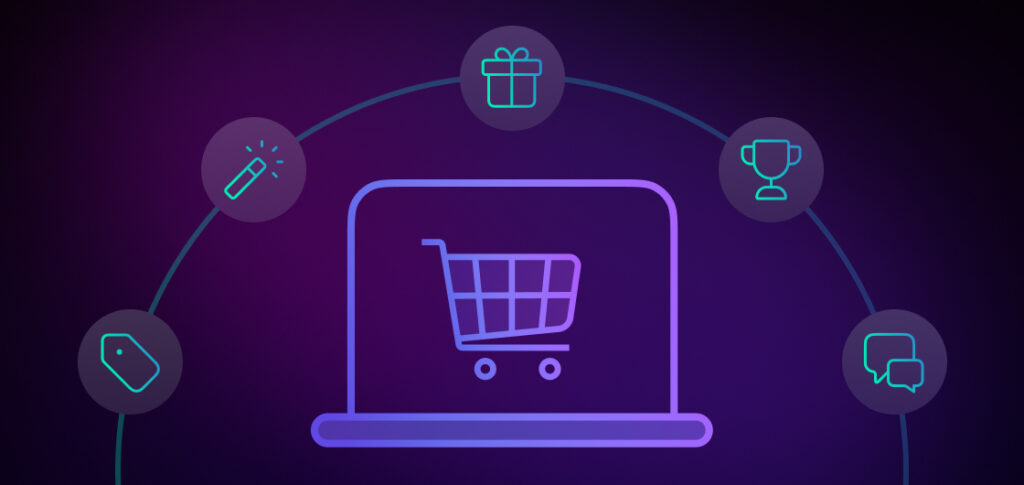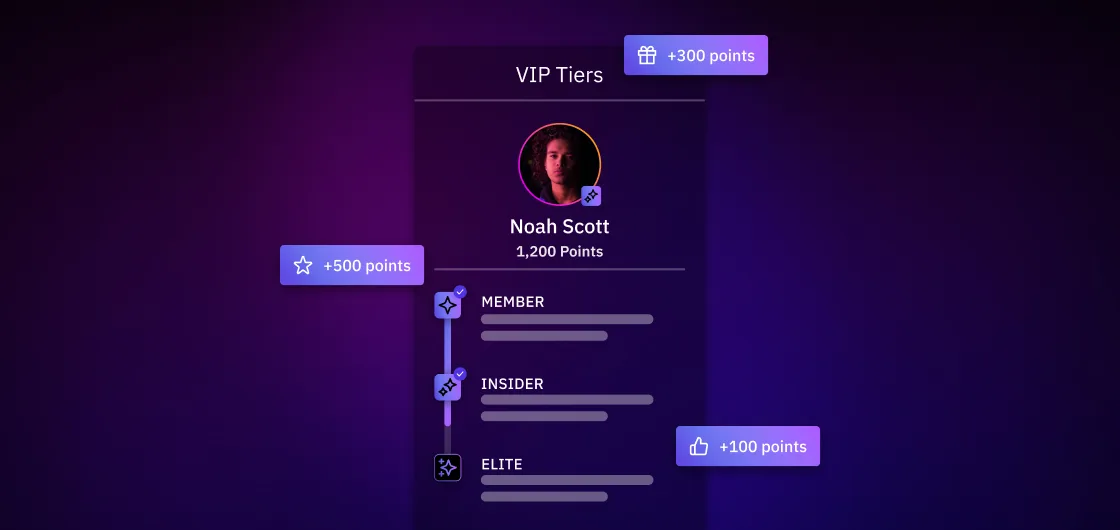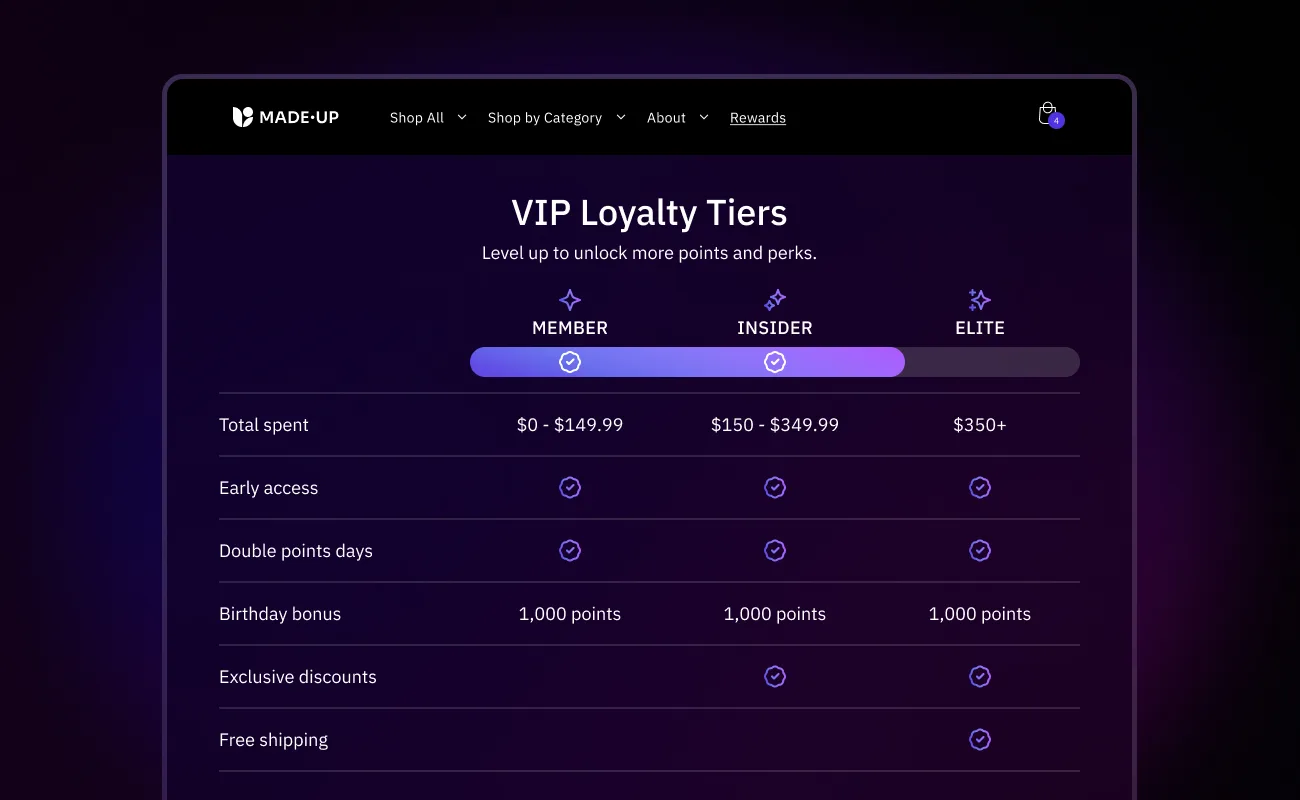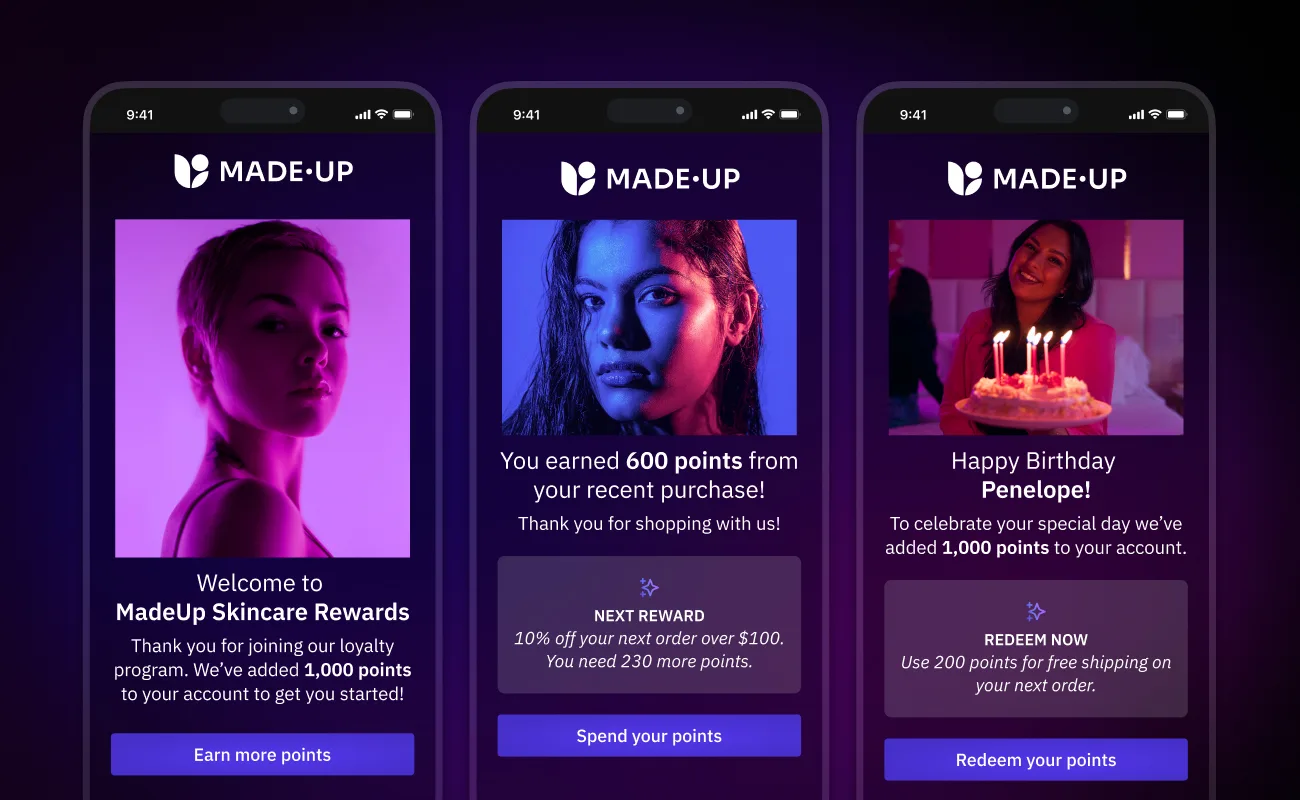
- Customer Experience
- Customer Loyalty
- Customer Marketing
- Customer Retention
- Ecommerce Marketing
- Loyalty
The Biggest Ecommerce Trends to Follow in 2025 (According to the Experts)
Megan Wenzl | Dec 2, 2024
Feb 20, 2024 | 7 minute read

Megan Wenzl
Content Marketing Manager
Brands can develop a loyalty program that not only retains customers but also turns them into brand advocates. Key features that make up an effective loyalty program include a rewarding points program, VIP tiers, customization, user-friendly redemption, and automated communication.
In the dynamic world of direct-to-consumer (DTC) marketing, loyalty programs have emerged as critical tools for sustaining customer engagement and driving brand growth. As acquiring new customers becomes increasingly costly, the value of nurturing existing customer relationships has never been more evident. A robust loyalty program not only helps in increasing customer lifetime value (CLTV) but also plays a vital role in reducing customer acquisition costs (CAC). This guide delves into how to create a program, the essential features of an effective one, and demonstrates how Okendo’s comprehensive solution aligns with these needs.
Loyalty programs are no longer just an optional add-on — they are a necessity for brands looking to thrive in a competitive market. The primary objectives of these programs are to reward repeat customers, thereby enhancing customer lifetime value CLTV, and to create a more cost-effective marketing strategy by reducing CAC. To put it simply, understanding the features that constitute a good loyalty program is crucial for brands today.
Zac Cherin, Co-Founder and CEO of Sidekick says, “I think the best loyalty programs accomplish two things with customers:
Before setting up a loyalty program, it’s essential to grasp what your customers value. Are they looking for discounts, exclusive access, or unique experiences? This understanding will shape your program’s design, ensuring it resonates with your audience. Conducting surveys or analyzing purchase history can provide invaluable insights into customer preferences, helping to tailor your program effectively.
Clear objectives are the backbone of any successful loyalty program. Do you aim to increase repeat purchases, improve customer engagement, or gather actionable data? Your goals will guide the program’s structure and metrics for success. It’s important to align these objectives with your overall business strategy to ensure they contribute to your company’s growth and customer satisfaction.
Visibility and awareness are key. Use multiple channels – email, social media, in-store promotions – to announce your loyalty program. The goal is to make sure your customers are not just aware of the program but excited about it. Effective storytelling and showcasing the benefits can make your program stand out and encourage participation.
Leverage customer data to offer personalized experiences. This could mean tailored rewards, special offers on birthdays, or product recommendations based on past purchases. Personalization is a powerful tool for building lasting customer relationships. Analyzing customer feedback and behavior patterns can also help in continuously refining and improving the personalization aspects of your loyalty program.
A points-based system is a fundamental feature of any good loyalty program. Okendo’s approach allows customers to earn points through a variety of actions, such as making purchases, signing up, leaving reviews, and engaging on social media. This flexibility encourages broader participation and engagement. Additionally, the accumulation of points can be a powerful motivator for customers to increase their interaction and spending.
Introducing tiered levels within your loyalty program can create a sense of exclusivity and achievement. Customers progress through different tiers based on their interaction with your brand, unlocking new rewards and benefits at each level. This tiered system helps in fostering a sense of loyalty and commitment among the most engaged customers.

Ease of access is critical. Features like an onsite customizable icon and a dedicated loyalty landing page ensure that customers can effortlessly engage with the program, enhancing their overall experience. Making the program easily accessible across customer touchpoints can also significantly increase customer participation.
Flexibility in how points can be earned allows brands to tailor the program according to their unique brand values and customer behavior. This customization ensures that the program aligns perfectly with the brand’s ethos and marketing strategies. Such personalization also enables brands to respond to changing market trends and customer preferences effectively.
The process for redeeming points should be seamless and integrated, preferably directly at the checkout. This ease of use encourages customers to make the most of their points, enhancing their shopping experience and fostering loyalty. A straightforward redemption process reduces friction and increases the likelihood of repeat usage.
Regular, automated communication is essential to keep customers informed and engaged with the loyalty program. This includes updates on points earned, rewards available, and other relevant program information. Efficient communication strengthens the customer-brand relationship and ensures a consistent flow of information.

A holistic view of each customer’s interactions across various touchpoints is invaluable. By integrating data from Reviews, Surveys, Quizzes, Referrals, and Loyalty interactions into a unified profile, brands can tailor their marketing strategies more effectively. This comprehensive view allows for more targeted and personalized marketing efforts.
The best loyalty programs are those that can integrate seamlessly with other marketing tools. Okendo’s solution, for instance, combines loyalty with reviews, referrals, quizzes, and surveys, providing a comprehensive view of customer engagement and simplifying marketing efforts. Integration with other tools streamlines processes and provides richer insights into customer behavior.
Once you have decided on the features of your loyalty program, the next step is implementation. This involves several key actions:
Choose a platform that offers the features you need. Okendo’s loyalty program product is designed for mid-market and enterprise-level brands, offering scalability and a range of features that cater to diverse needs. It’s crucial to select a platform that not only meets your current requirements but also has the flexibility to adapt as your brand evolves.
Design your program based on your defined goals and customer understanding. This includes setting up the points system, tiers, rewards, and redemption processes. Carefully consider how each element of the program aligns with your brand values and maximizes the customer experience, ensuring it resonates with your target audience.
Integrate the loyalty program with your existing tech stack. This ensures smooth operation and a unified customer experience. Seamless integration is key for ensuring that data flows efficiently between systems, allowing for real-time updates and insights into customer behavior and program effectiveness.
Launch your program with a comprehensive marketing campaign. Use different channels to reach your audience and drive sign-ups. Leverage email marketing, social media, and in-store promotions to create excitement and awareness about your new loyalty program, encouraging early adoption and engagement.
Continuously monitor the performance of your loyalty program. Use data and customer feedback to make necessary adjustments and improvements. Regular analysis of program metrics will help you understand what’s working and what’s not, allowing you to iterate and enhance the program to better meet customer needs and business objectives.
A well-crafted loyalty program is a powerful tool in a brand’s tech stack, especially with increasing competition and evolving customer expectations. By focusing on key features like a rewarding points program, VIP tiers, accessibility, customization, user-friendly redemption, automated communication, and unified customer profiles, brands can develop a program that not only retains customers but also turns them into brand advocates. Implementing these features with a customer marketing platform like Okendo ensures a comprehensive, integrated approach to customer loyalty, driving both CLTV and overall business success.
Related articles
Ready to learn more?